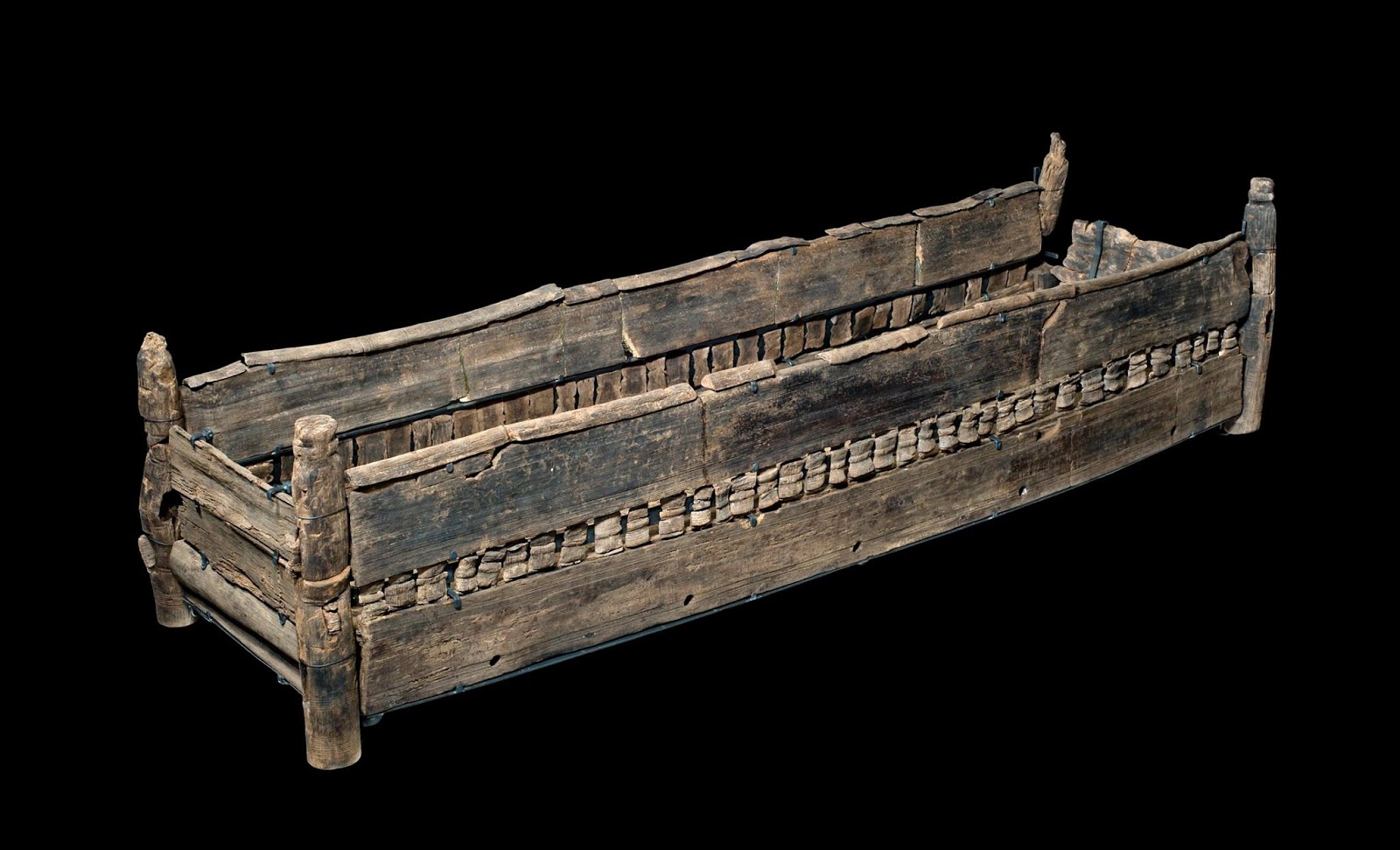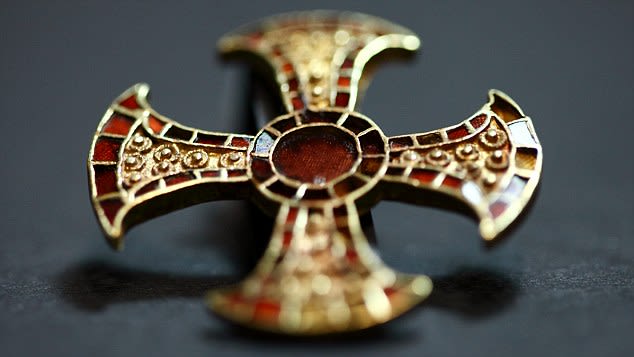

A new study published this week in Medieval Archaeology, suggests that the rare phenomenon of bed burial in early medieval Europe was imported into England as a result of women's mobility associated with Christianisation.
Author Dr Emma Brownlee, Ottilie Hancock Research Fellow in Archaeology at Girton College and Fellow of the McDonald Institute for Archaeological Research, said, "Bed burial is an unusual burial rite given to women in seventh century England. These burials have often been associated with Christianity; one example, the Trumpington bed burial, has a small gold and garnet cross with it."

Trumpington cross. Credit: Museum of Archaeology and Anthropology
"Comparison with other bed burials from across Europe shows that the bed burial rite was originally much more widespread, with the earliest example dating to fifth century Slovakia, and the latest to tenth century Norway. Likewise, bed burial isn't restricted to just women; men and children were also buried in beds, one of the most famous being the burial of a 5-6 year old boy underneath Cologne Cathedral."
"Isotopic analysis from three of the English bed burials suggests that the women buried in them did not grow up in Britain. This, along with the stark differences in who was given a bed burial in England and continental Europe, suggests that it was imported by a specific group of women, likely linked to conversion efforts in the seventh century. Bed burial therefore acquired feminine and Christian characteristics in England, that it did not have elsewhere."
--
Emma Brownlee (2022) Bed Burials in Early Medieval Europe, Medieval Archaeology, 66:1, 1-29, DOI: 10.1080/00766097.2022.2065060


